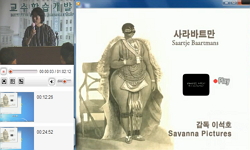This thesis examines the reality of Hwaseo's view of scholarship established through the various academic roots, and explains the writing techniques in his poetic world. The results are as follows; With the roots including the Five Books of Confuciani...
http://chineseinput.net/에서 pinyin(병음)방식으로 중국어를 변환할 수 있습니다.
변환된 중국어를 복사하여 사용하시면 됩니다.
- 中文 을 입력하시려면 zhongwen을 입력하시고 space를누르시면됩니다.
- 北京 을 입력하시려면 beijing을 입력하시고 space를 누르시면 됩니다.
부가정보
다국어 초록 (Multilingual Abstract)
The characteristics of his poetic techniques are the use of quotation and interweaving narrative with discussion. He did not stay in just borrowing or variations on the quotation, but gave new meanings beyond the acceptation, and even reached the point of creating newly coined words.
He made pithy narratives according to historical events and character's activities, put forward some discussions, and then expressed his emotion. In particular, there were the poems described by interweaving narrative with discussion based on Mencius’s historical viewpoint of ‘repetition of peaceful times and troublous times one by one(一治一亂)’, which could be regarded as the most representative works of his literary value as well as the essence of his scholarship and ideas.
This thesis examines the reality of Hwaseo's view of scholarship established through the various academic roots, and explains the writing techniques in his poetic world. The results are as follows; With the roots including the Five Books of Confucianism, Five Classics, the books of Zhuxi and Songjadaejeon, Hwaseo established his own scholarship based on the principle of ‘keeping of piety and acting with prudence(持敬致愼)’. And he pursued a practical discipline in parallel with ‘understanding the utmost principle and extension of knowledge(致知)’ and ‘diligent self-cultivation(力行)’.
The characteristics of his poetic techniques are the use of quotation and interweaving narrative with discussion. He did not stay in just borrowing or variations on the quotation, but gave new meanings beyond the acceptation, and even reached the point of creating newly coined words.
He made pithy narratives according to historical events and character's activities, put forward some discussions, and then expressed his emotion. In particular, there were the poems described by interweaving narrative with discussion based on Mencius’s historical viewpoint of ‘repetition of peaceful times and troublous times one by one(一治一亂)’, which could be regarded as the most representative works of his literary value as well as the essence of his scholarship and ideas.
참고문헌 (Reference)
1 성백효, "論語集註" 전통문화연구회
2 금장태, "화서학파의 철학과 시대인식" 태학사 2001
3 오영섭, "화서학파의 사상과 민족운동" 국학자료원 1999
4 이향배, "화서 이항로의 시에 나타난 道義思想" 화서학회 Ⅱ : 2006
5 황하준, "화서 이항로 한시 연구" 한국교원대학교 대학원 2009
6 崔益鉉, "한국문집총간 325~326집"
7 柳重敎, "한국문집총간 323~324집"
8 金平默, "한국문집총간 319~320집"
9 李恒老, "한국문집총간 304~305집"
10 李滉, "한국문집총간 29~31집"
1 성백효, "論語集註" 전통문화연구회
2 금장태, "화서학파의 철학과 시대인식" 태학사 2001
3 오영섭, "화서학파의 사상과 민족운동" 국학자료원 1999
4 이향배, "화서 이항로의 시에 나타난 道義思想" 화서학회 Ⅱ : 2006
5 황하준, "화서 이항로 한시 연구" 한국교원대학교 대학원 2009
6 崔益鉉, "한국문집총간 325~326집"
7 柳重敎, "한국문집총간 323~324집"
8 金平默, "한국문집총간 319~320집"
9 李恒老, "한국문집총간 304~305집"
10 李滉, "한국문집총간 29~31집"
11 趙寅永, "한국문집총간 299집"
12 金昌協, "한국문집총간 161~162집"
13 宋時烈, "한국문집총간 108~116집"
14 한국고전번역원, "한국고전종합DB"
15 朱熹, "주자대전 1~13" 한국학술정보 2010
16 박성순, "조선후기 화서 이항로의 위정척사사상" 경인문화사 2003
17 정우진, "양평 벽계리에 설정된 곡중경(曲中景)의 지향성과 화서(華西) 이항로(李恒老)의 벽원(蘗園) 경영" 한국전통조경학회 34 (34): 78-97, 2016
18 권오영, "김평묵의 斥邪論과 聯名儒疏" 일지사 55 : 1989
19 성백효, "詩經集傳上⋅下" 전통문화연구회
20 홍우흠, "華西 李恒老의 山水詩 試探" 한국어문교육연구회 32 (32): 171-199, 2004
21 성균관대학교 대동문화연구원, "經書" 아세아문화사 1990
22 朱熹, "朱子語類大全"
23 徐師曾, "文體明辨序說" 人民文學出版社 1998
24 이화형, "崔滋의 新意와 用事에 대한 再考" 한국어문교육연구회 32 (32): 367-390, 2004
25 성백효, "小學集註" 전통문화연구회
26 성백효, "孟子集註" 전통문화연구회
27 성백효, "大學⋅中庸集註" 전통문화연구회
동일학술지(권/호) 다른 논문
-
志山 金福漢의 파리장서운동과 그 사상적 배경 — 華西學派와의 관계를 중심으로 —
- 동양고전학회
- 박성순
- 2017
- KCI등재
-
- 동양고전학회
- 김영옥
- 2017
- KCI등재
-
조선 후기 宗簿寺 郎廳의 실태 및 운영체계 — 장서각 소장 『宗簿寺郎廳先生案』을 중심으로 —
- 동양고전학회
- 김동근
- 2017
- KCI등재
-
- 동양고전학회
- 맹영일
- 2017
- KCI등재
분석정보
인용정보 인용지수 설명보기
학술지 이력
| 연월일 | 이력구분 | 이력상세 | 등재구분 |
|---|---|---|---|
| 2027 | 평가예정 | 재인증평가 신청대상 (재인증) | |
| 2021-01-01 | 평가 | 등재학술지 유지 (재인증) |  |
| 2018-01-01 | 평가 | 등재학술지 유지 (등재유지) |  |
| 2015-01-01 | 평가 | 등재학술지 유지 (등재유지) |  |
| 2011-01-01 | 평가 | 등재학술지 유지 (등재유지) |  |
| 2008-01-01 | 평가 | 등재학술지 선정 (등재후보2차) |  |
| 2007-01-01 | 평가 | 등재후보 1차 PASS (등재후보1차) |  |
| 2005-01-01 | 평가 | 등재후보학술지 선정 (신규평가) |  |
학술지 인용정보
| 기준연도 | WOS-KCI 통합IF(2년) | KCIF(2년) | KCIF(3년) |
|---|---|---|---|
| 2016 | 0.48 | 0.48 | 0.44 |
| KCIF(4년) | KCIF(5년) | 중심성지수(3년) | 즉시성지수 |
| 0.44 | 0.42 | 1.058 | 0.15 |




 KCI
KCI eArticle
eArticle






